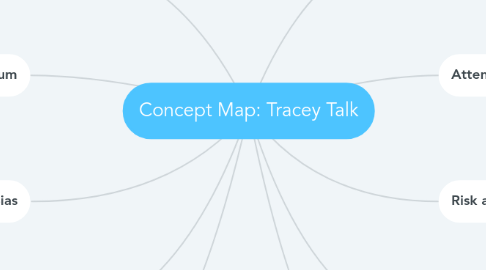
1. Selective Attention
1.1. Bottleneck
1.1.1. People have a limited amount of attentional resources that they can use at one time
2. Attention Continuum
2.1. Bored to high alert to high stress
3. Attention Bias
3.1. Similar to adaptation, you will pay attention to what you enjoy or do most
3.1.1. For example my attention will go towards sports more than it does the opera
4. Learning
4.1. Without both attention and memory, nobody is capable of learning
4.1.1. Attention + Memory = Learning
4.1.1.1. Mind wandering is good for learning because it allows for people to make connections between multiple things
5. Attention Blindness
5.1. When paying attention to one thing you may not notice specific things
5.1.1. Gorilla video: People are asked to look at how many passes the people made, but there was a gorilla that people do not notice because they are paying attention to the passes.
6. Mind Wandering
6.1. Not a waste of time
6.2. Seen as the "Default Mode"
6.3. Allows you to link things up in your brain
6.3.1. The more you know, the more you can know
7. Attention
7.1. One of the two big pillars of learning
7.2. Saliency from a perception perspective
7.3. Multi-modal
7.3.1. Monotone = Boring
8. Risk and Protective Factors
8.1. Could be missing things going on in the world
9. Adaptation
9.1. Brain adapts to what you do most
9.1.1. Needs to be open to spending energy to learn new things
10. Brain
10.1. Heuristics: Mental shortcuts your brain uses
10.1.1. Brain uses 20% of calorie intake
10.2. No learning without memory
10.2.1. Memory is one of the two big pillars of learning
10.2.1.1. Writing by hand creates better memory
10.3. Brain is very fragile
10.3.1. Most sensitive part of the body are your lips and fingertips
